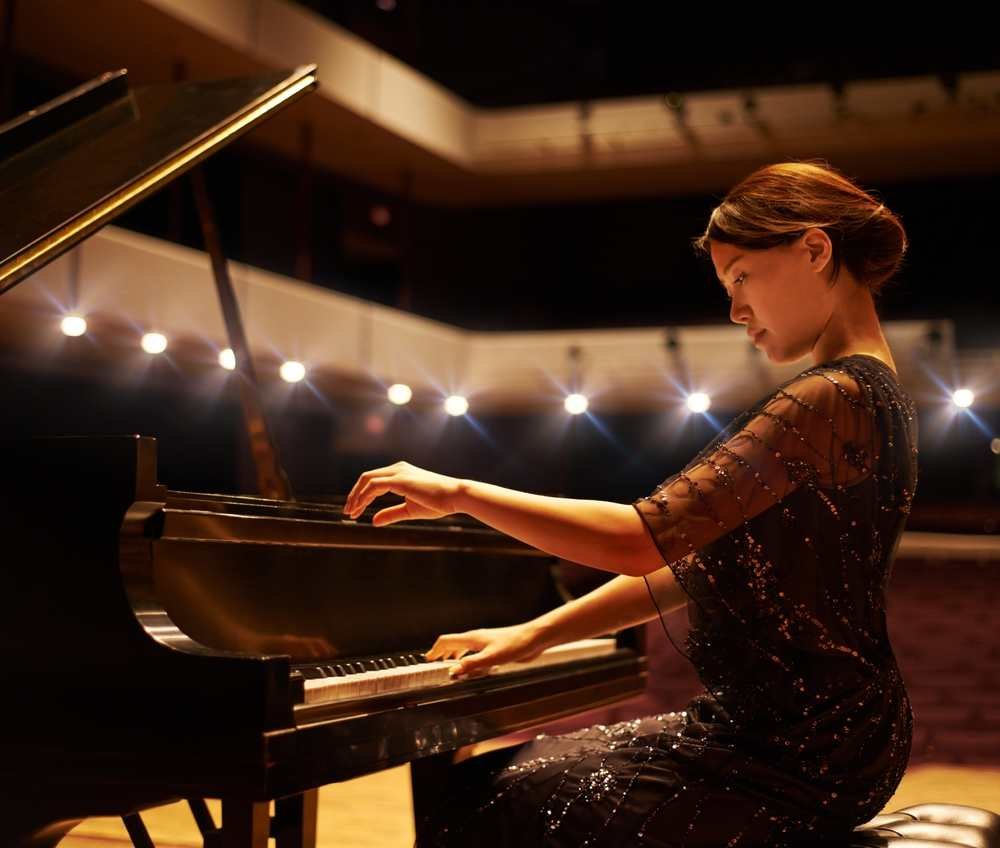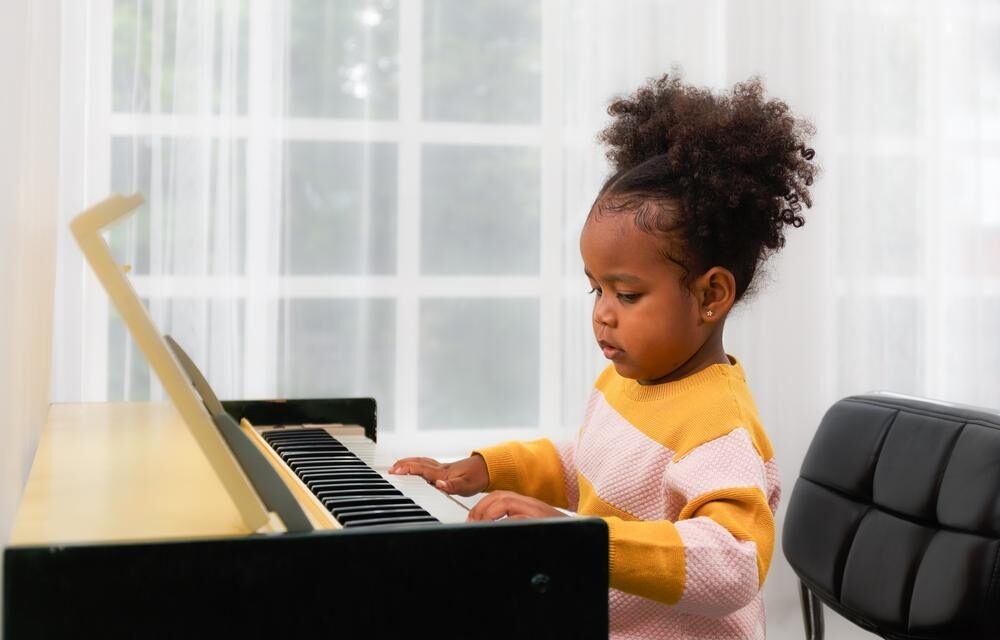
When you think of a piano, you might picture the church choir singing along to the piano or perhaps your favorite pop artist on stage playing piano while they sing your favorite songs. But do you know what kind of musical instrument the piano is? While commonly considered part of the strings family, the piano is actually a percussion instrument!
Categorizing most musical instruments is fairly straightforward: a horn made of brass is a brass instrument; an instrument made of wood is a woodwind. When it comes to differentiating between strings and percussion, a piano seems to have both. When you schedule your first piano lessons, you will experience for yourself how the piano is a percussion instrument. Continue on to learn more about how and why the piano is considered a percussion instrument.
Why Do People Think the Piano Is a String Instrument?
The piano is often considered a string instrument because of how a piano is made. Inside the piano, there are long strings that produce sounds. In fact, the piano belongs to the chordophone family, which also includes stringed instruments like the harp and lyre. String instruments generally refer to musical instruments where the sound is produced as stretched strings vibrate. String instruments include the guitar, violin, viola, cello, bass, banjo, mandolin, ukulele, and harp.
Why Is the Piano a Percussion Instrument?
So, why is the piano a percussion instrument? Well, it has to do with the way the piano produces sound. While other string instruments create sound by plucking the strings or moving a bow across them, the piano has a different method. Inside the piano, along with long strings, are felt-covered hammers. When you press down on one or more keys, it causes these hammers to hit the strings. The hammer striking a string to create sound differentiates the piano from other string instruments.
Types of Pianos
There are three main categories of piano: grand, upright, and electric. The grand piano is the largest piano type and features a horizontal soundboard with an opening platform. The upright piano is common in living rooms and parlors, featuring a more compact design with a vertical soundboard. Both the grand piano and upright pianos are traditionally acoustic pianos. The third type of piano is the electric piano, which offers a more affordable alternative to acoustic pianos. Some electric pianos can have fewer keys than an acoustic piano, though they can still offer a great opportunity to begin learning how to play.
How a Piano Works
A piano has 88 black and white keys that each play a different note. Multiple keys can be played at the same time, too, which creates chords and harmonies. The way a piano makes sound is by the striking action of hammers inside the piano. A piano player presses down on the piano key, which engages the hammer and strikes the string. As the strings vibrate, the vibrations move through the soundboard, and the entire piano vibrates to produce the sound and make it louder. The strings in a piano also have different thicknesses, so a thicker string will produce a lower note.
Benefits of Learning the Piano

Whether you think of the piano as a string or a percussion instrument, when you learn to play the piano, you will experience both physical and mental benefits. The piano offers a creative outlet, helps improve hand-eye coordination, and sharpens fine motor skills. Playing any musical instrument, including the piano, can even help reduce your anxiety, lower your blood pressure, and numerous other health benefits. Musicians of all ages can also benefit from how learning the piano can help boost cognitive and intellectual abilities. From improving memory to enforcing good habits like focus and perseverance, learning to play the piano can equip you with various skills and abilities for years to come.
Learn the Piano with Us Today!
Get started today with piano lessons in the comfort of your own home. Call or visit us online at Lessons in Your Home to schedule piano lessons with experienced, knowledgeable teachers who are passionate about helping you learn the piano. We make your availability our priority and offer 30- to 60-minute sessions that work with your schedule. Lessons In Your Home features a tight-knit group of world-class piano teachers who want to help make learning the piano a fun experience for everyone. We will pair you with a local teacher who best matches your age, skill level, goals, and schedule. Then we will schedule your first months of piano lessons so you can get started learning the piano easily at home.